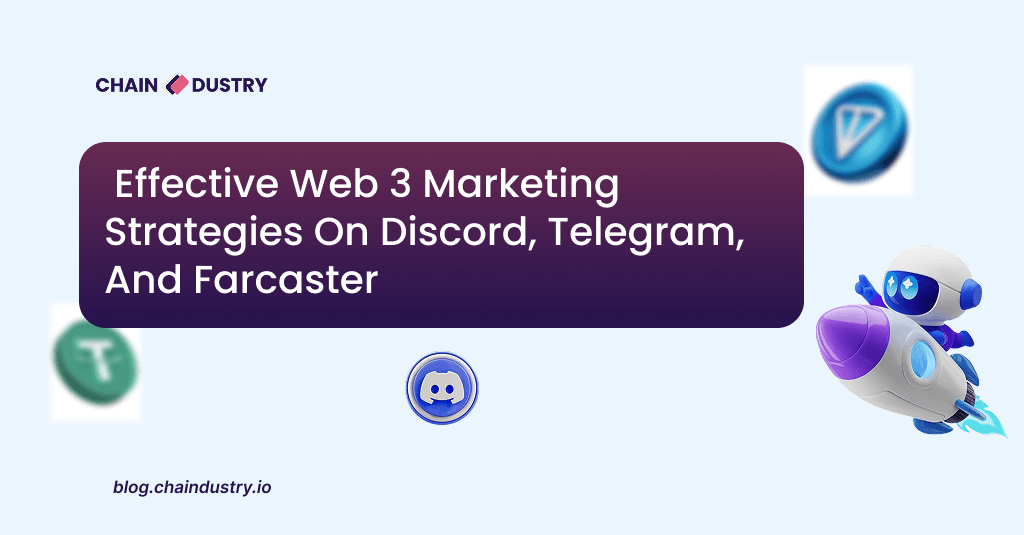Introduction
Marketing in the Web3 era is completely different from traditional digital marketing. Forget ads, algorithms, and influencer shoutouts, Web3 audiences value authenticity, transparency, and community. In this new landscape, brands that succeed are those that build trust, reward participation, and speak the language of crypto-native users.
Whether you’re launching a decentralized project, an NFT collection, or a crypto product, your marketing must move beyond clicks and followers. It’s about creating communities that care not just customers who buy.
Understanding Web3 Marketing
In Web2, brands controlled the message. In Web3, communities control the narrative. Successful marketing now revolves around:
1. Decentralized communication: Platforms like Discord, Telegram, and Farcaster replace traditional ad networks.
2. Community incentives: Tokens, NFTs, or badges reward early supporters and encourage engagement.
3. Transparency: Open development, regular updates, and public roadmaps build credibility.
4. Identity and belonging: Users identify more with communities than companies, they want to participate, not just consume.
This means every Web3 brand must focus on genuine interaction rather than one-way promotion.

Effective Web3 Marketing Strategies on Discord, Telegram, and Farcaster
To reach crypto-native audiences, you must show up where they spend their time and use each platform the right way.
1. Discord
Build and Nurture Your Core Community Discord remains the central hub for most Web3 projects. It allows direct, real-time connection with your most engaged members.
Strategy: Create well-structured channels for announcements, feedback, and discussions.
Engagement tip: Use polls, AMAs, and live voice sessions to make members feel heard.
Pro tip: Assign community roles or NFT-based access to make participation feel exclusive.
2. Telegram
Keep Conversations Fast and Transparent Telegram is where fast-moving conversations happen, especially for DeFi and crypto news.
Strategy: Use Telegram for instant updates and open dialogue.
Engagement tip: Set clear community rules to avoid spam and misinformation.
Pro tip: Integrate bots that automate tasks such as new member greetings or reward distribution.
3. Farcaster
Reach Crypto-Native Creators and Thought Leaders Farcaster is a decentralized social protocol gaining traction among serious builders, creators, and investors.
Strategy: Use it to share transparent updates, technical insights, and thoughtful commentary.
Engagement tip: Avoid hard selling. Focus on authenticity and contribution.
Pro tip: Host discussions about your project’s vision to attract long-term believers, not just speculators.
These three platforms complement each other. Discord builds loyalty, Telegram maintains speed and transparency, and Farcaster establishes credibility. Together, they form a strong foundation for your Web3 marketing strategy.
Beyond Platforms: What Actually Drives Web3 Growth
The secret to Web3 marketing is not just where you show up, but how you engage. Here’s what consistently works:
1. Storytelling through transparency: Share your journey, the wins, losses, and lessons. It builds trust.
2. Token-based loyalty: Reward genuine supporters with NFTs, access tokens, or future benefits.
3. Collaborations: Partner with other projects to cross-promote communities and create shared value.
4. Education: Offer simple explainers, tutorials, and AMAs to onboard newcomers.
5. User-generated content: Encourage your community to create memes, videos, and articles that spread your message organically.
When people feel part of your story, they become your biggest advocates.
Conclusion
Web3 marketing is not about shouting louder it’s about listening better. Communities drive reputation and growth, not ad budgets. The most successful brands in 2025 will be those that treat their audiences as partners, not targets.
By mastering platforms like Discord, Telegram, and Farcaster (and by focusing on authenticity and collaboration) your project can grow sustainably in the decentralized world.
Marketing in Web3 isn’t about building hype; it’s about building trust.
